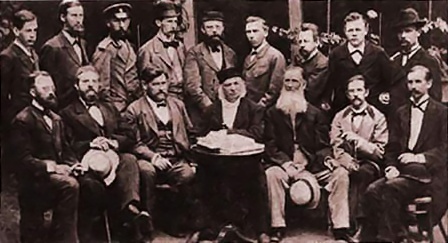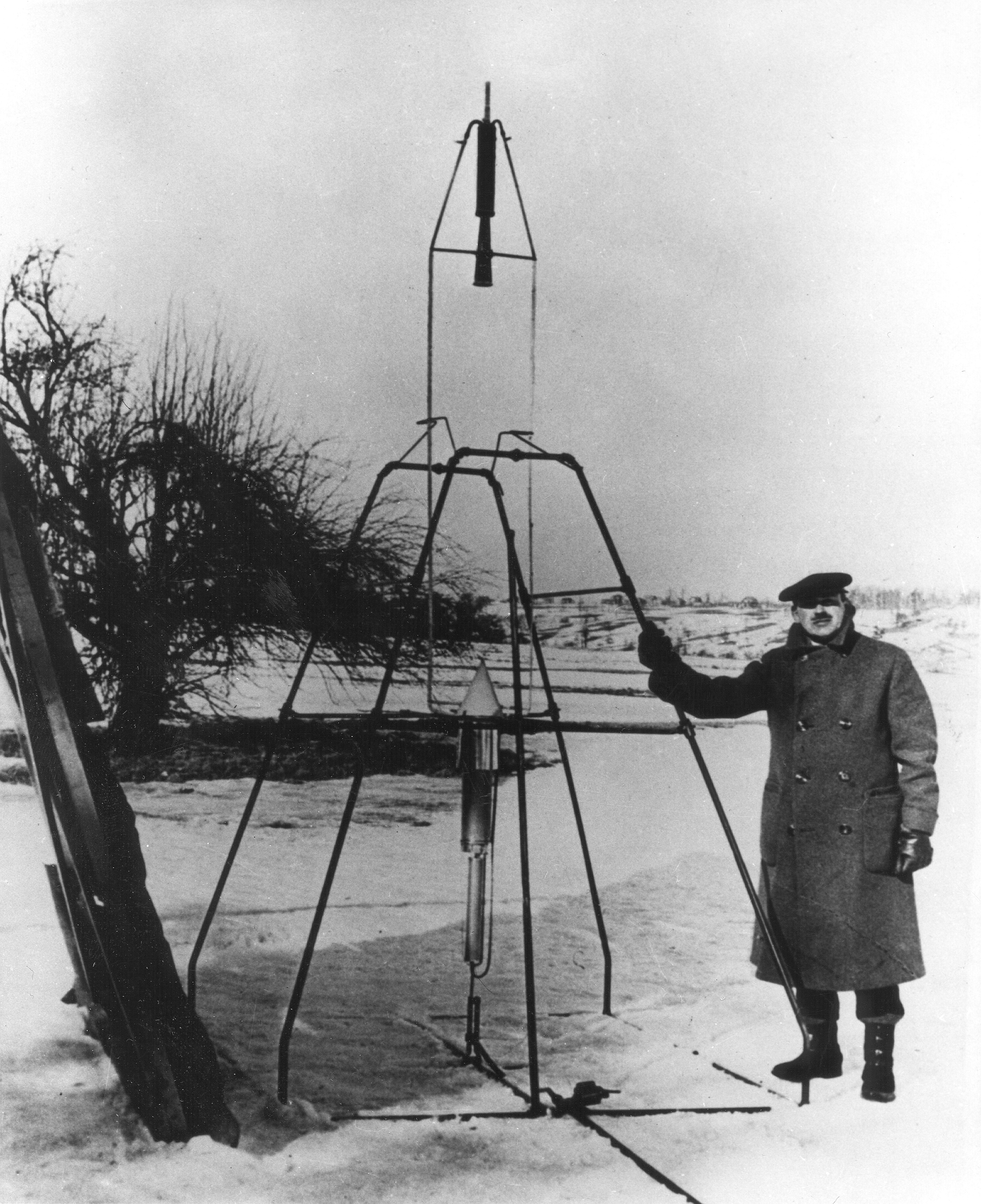|
Michael Lidov
Mikhail L'vovich Lidov (russian: Михаи́л Льво́вич Ли́дов, 4 October 1926–30 December 1993) was a Soviet and Russian astronomer specialising in celestial mechanics. He is best known for discovering, simultaneously with Yoshihide Kozai, the Kozai-Lidov mechanism. In 1960, he was awarded the Lenin prize for his contributions to the Soviet space program. The asteroid 4236 Lidov, discovered by Nikolai Chernykh in 1979, was named in his honour. The official naming citation was published by the Minor Planet Center The Minor Planet Center (MPC) is the official body for observing and reporting on minor planets under the auspices of the International Astronomical Union (IAU). Founded in 1947, it operates at the Smithsonian Astrophysical Observatory. Function ... on 1 September 1993 (). References 1926 births 1993 deaths Russian astronomers Soviet astronomers Moscow State University alumni {{Russia-scientist-stub ... [...More Info...] [...Related Items...] OR: [Wikipedia] [Google] [Baidu] |
Astronomy Letters
''Astronomy Letters'' (Russian: ''Pis’ma v Astronomicheskii Zhurnal'') is a Russian peer-reviewed scientific journal. The journal covers research on all aspects of astronomy and astrophysics, including high energy astrophysics, cosmology, space astronomy, theoretical astrophysics, radio astronomy, extra galactic astronomy, stellar astronomy, and investigation of the Solar system. ''Pis’ma v Astronomicheskii Zhurnal'' is translated in its English version by MAIK Nauka/Interperiodica, which is also the official publisher. However, beginning in 2006 access and distribution outside of Russia is made through Springer Science+Business Media. Both English and Russian versions are published simultaneously. ''Astronomy Letters'' was established in 1994 and published bimonthly. From 1999, it has been published monthly. The editor-in-chief is Rashid A. Sunyaev (Space Research Institute). Abstracting and indexing ''Astronomy Letters'' is abstracted and indexed in: According to the ''J ... [...More Info...] [...Related Items...] OR: [Wikipedia] [Google] [Baidu] |
Yoshihide Kozai
Yoshihide Kozai (1 April 1928 – 5 February 2018) was a Japanese astronomer specialising in celestial mechanics. He is best known for discovering, simultaneously with Michael Lidov, the Kozai mechanism, for which he received the Imperial Prize of the Japan Academy in 1979.Japan Academy61st-70th retrieved 2011-08-15 From 1988 to 1991, he was the president of the International Astronomical Union. In 1989, he received the Brouwer Award of the American Astronomical Society. In 2009, he won the Decoration of Cultural Merit from the Japanese government. He died on 5 February 2018 due to liver failure. The asteroid 3040 Kozai is named in his honour. References External links Oral history interview with Yoshihide Kozai on 2 September 1997, American Institute of Physics, Niels Bohr Library & Archives- interview conducted at the Tokyo Institute of Technology is a national research university located in Greater Tokyo Area, Japan. Tokyo Tech is the largest institution f ... [...More Info...] [...Related Items...] OR: [Wikipedia] [Google] [Baidu] |
Russian Astronomers
This list of Russian astronomers and astrophysicists includes the famous astronomers, astrophysicists and cosmologists from the Russian Empire, the Soviet Union and the Russian Federation. Alphabetical list __NOTOC__ A *Tateos Agekian, one of the pioneers of Russian and world Stellar dynamics, discoverer of two evolutionary sequences of stellar systems: nearly spherical and strongly flattened *Vladimir Albitsky, discovered a significant number of asteroids *Viktor Ambartsumian, one of the founders of theoretical astrophysics, discoverer of stellar associations, founder of Byurakan Observatory in Armenia *Andrejs Auzāns, director of the Tashkent observatory, 1911-1916 B *Nikolai P. Barabashov, co-author of the ground breaking publication of the first pictures of the far side of the Moon in 1961, called ''Atlas of the Other Side of the Moon''; a crater and a planet were named after him *Vladimir Belinski, an author of the BKL singularity model of the Universe evolution *Igor ... [...More Info...] [...Related Items...] OR: [Wikipedia] [Google] [Baidu] |
1993 Deaths
File:1993 Events Collage.png, From left, clockwise: The Oslo I Accord is signed in an attempt to resolve the Israeli–Palestinian conflict; The Russian White House is shelled during the 1993 Russian constitutional crisis; Czechoslovakia is peacefully dissolved into the Czech Republic and Slovakia; In the United States, the ATF besieges a compound belonging to David Koresh and the Branch Davidians in a search for illegal weapons, which ends in the building being set alight and killing most inside; Eritrea gains independence; A major snow storm passes over the United States and Canada, leading to over 300 fatalities; Drug lord and narcoterrorist Pablo Escobar is killed by Colombian special forces; Ramzi Yousef and other Islamic terrorists detonate a truck bomb in the subterranean garage of the North Tower of the World Trade Center in the United States., 300x300px, thumb rect 0 0 200 200 Oslo I Accord rect 200 0 400 200 1993 Russian constitutional crisis rect 400 0 600 200 ... [...More Info...] [...Related Items...] OR: [Wikipedia] [Google] [Baidu] |
1926 Births
Events January * January 3 – Theodoros Pangalos (general), Theodoros Pangalos declares himself dictator in Greece. * January 8 **Abdul-Aziz ibn Saud is crowned King of Kingdom of Hejaz, Hejaz. ** Bảo Đại, Crown Prince Nguyễn Phúc Vĩnh Thuy ascends the throne, the last monarch of Vietnam. * January 12 – Freeman Gosden and Charles Correll premiere their radio program ''Sam 'n' Henry'', in which the two white performers portray two black characters from Harlem looking to strike it rich in the big city (it is a precursor to Gosden and Correll's more popular later program, ''Amos 'n' Andy''). * January 16 – A BBC comic radio play broadcast by Ronald Knox, about a workers' revolution, causes a panic in London. * January 21 – The Belgian Parliament accepts the Locarno Treaties. * January 26 – Scottish inventor John Logie Baird demonstrates a mechanical television system at his London laboratory for members of the Royal Institution and a report ... [...More Info...] [...Related Items...] OR: [Wikipedia] [Google] [Baidu] |
Minor Planet Circulars
The Minor Planet Center (MPC) is the official body for observing and reporting on minor planets under the auspices of the International Astronomical Union (IAU). Founded in 1947, it operates at the Smithsonian Astrophysical Observatory. Function The Minor Planet Center is the official worldwide organization in charge of collecting observational data for minor planets (such as asteroids), calculating their orbits and publishing this information via the '' Minor Planet Circulars''. Under the auspices of the International Astronomical Union (IAU), it operates at the Smithsonian Astrophysical Observatory, which is part of the Center for Astrophysics along with the Harvard College Observatory. The MPC runs a number of free online services for observers to assist them in observing minor planets and comets. The complete catalogue of minor planet orbits (sometimes referred to as the "Minor Planet Catalogue") may also be freely downloaded. In addition to astrometric data, the MPC collect ... [...More Info...] [...Related Items...] OR: [Wikipedia] [Google] [Baidu] |
Minor Planet Center
The Minor Planet Center (MPC) is the official body for observing and reporting on minor planets under the auspices of the International Astronomical Union (IAU). Founded in 1947, it operates at the Smithsonian Astrophysical Observatory. Function The Minor Planet Center is the official worldwide organization in charge of collecting observational data for minor planets (such as asteroids), calculating their orbits and publishing this information via the '' Minor Planet Circulars''. Under the auspices of the International Astronomical Union (IAU), it operates at the Smithsonian Astrophysical Observatory, which is part of the Center for Astrophysics along with the Harvard College Observatory. The MPC runs a number of free online services for observers to assist them in observing minor planets and comets. The complete catalogue of minor planet orbits (sometimes referred to as the "Minor Planet Catalogue") may also be freely downloaded. In addition to astrometric data, the MPC collect ... [...More Info...] [...Related Items...] OR: [Wikipedia] [Google] [Baidu] |
Nikolai Chernykh
Nikolai Stepanovich Chernykh (russian: Никола́й Степа́нович Черны́х) (6 October 1931 – 25 May 2004Казакова, Р.К. Памяти Николая Степановича Черных'. Труды Государственного астрономического института им. П.К. Штернберга, Т. 78, М., 2005. – 115 с.) was a Russian-born Soviet astronomer and discoverer of minor planets and comets at the Crimean Astrophysical Observatory in Nauchnyy, Crimea. Biography and work Chernykh was born in the Russian city of Usman in Voronezh Oblast, in present-day Lipetsk Oblast. He specialized in astrometry and the dynamics of small bodies in the Solar System and worked at the Crimean Astrophysical Observatory from 1963. Chernykh discovered two periodic comets 74P/Smirnova–Chernykh and 101P/Chernykh. He also discovered a very large number of asteroids, including notably 2867 Šteins and the Trojan asteroid 2207 Antenor. ... [...More Info...] [...Related Items...] OR: [Wikipedia] [Google] [Baidu] |
4236 Lidov
4 (four) is a number, numeral and digit. It is the natural number following 3 and preceding 5. It is the smallest semiprime and composite number, and is considered unlucky in many East Asian cultures. In mathematics Four is the smallest composite number, its proper divisors being and . Four is the sum and product of two with itself: 2 + 2 = 4 = 2 x 2, the only number b such that a + a = b = a x a, which also makes four the smallest squared prime number p^. In Knuth's up-arrow notation, , and so forth, for any number of up arrows. By consequence, four is the only square one more than a prime number, specifically three. The sum of the first four prime numbers two + three + five + seven is the only sum of four consecutive prime numbers that yields an odd prime number, seventeen, which is the fourth super-prime. Four lies between the first proper pair of twin primes, three and five, which are the first two Fermat primes, like seventeen, which is the third. On the other han ... [...More Info...] [...Related Items...] OR: [Wikipedia] [Google] [Baidu] |
Soviet Space Program
The Soviet space program (russian: Космическая программа СССР, Kosmicheskaya programma SSSR) was the national space program of the former Union of Soviet Socialist Republics (USSR), active from 1955 until the dissolution of the Soviet Union in 1991. Soviet investigations in rocketry began with the formation of a research laboratory in 1921, but these efforts were hampered by the devastating war with Germany. Competing in the Space Race with the United States and later with the European Union and China, the Soviet program was notable in setting many records in space exploration, including the first intercontinental missile that launched the first satellite and sent the first animal into Earth orbit in 1957, and placed the first human in space in 1961. In addition, the Soviet program also saw the first woman in space in 1963 and a cosmonaut performing the first spacewalk in 1965. Other milestones included computerized robotic missions exploring t ... [...More Info...] [...Related Items...] OR: [Wikipedia] [Google] [Baidu] |
Aleksey Lidov
Alexei Mikhailovich Lidov (Russian language, Russian: Алексей́ Михай́лович Ли́дов) is a Russian art history, art historian and Byzantine studies, byzantinist, an author of the concepts ''hierotopy'' and ''spatial icon'', member of the :ru:Российская академия художеств, Russian Academy of Arts. Life and career Lidov was born in Moscow on March 9, 1959. His father, Mikhail Lidov, was a Russian space scientist; his mother, Diana – a mathematician. Upon the graduation from the department of art history of the Moscow State University in 1981, his first appointment was at the :ru:Музей Востока (Москва), State Museum of Oriental Art in Moscow. He earned a PhD in art history from the Moscow State University in 1989. In 1991 he founded the Research Center for the Eastern Christian Culture, an independent non-governmental organization, and has worked as its director. In 2008—2009 he served as the vice-president of ... [...More Info...] [...Related Items...] OR: [Wikipedia] [Google] [Baidu] |




